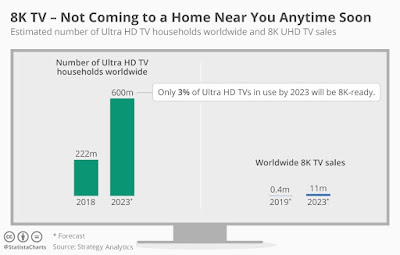H.264 vs H.265 vs H.266
The
most popular video codec right now is the H.264 standard since almost
all media devices support it. Even video platforms on the web can’t help but
add support for this codec, and for good reasons. YouTube, despite having its own,
is beholden to H.264, and this won’t change for years to come.
Now,
we do not expect it to be the top dog forever as more competitors come on the
scene in hopes to replace it. The most notable would likely be the upgraded
version, H.265, also known as HEVC (High-Efficiency Video Coding).
There is also the H.266 codec, but it differs a great deal when compared to the others we’ve just mentioned. Worry not, however, because we are going to explain each for your deeper understanding.
1] What is H.264 codec
This
codec has been around since 2009, and for quite some time, it has been the
standard. The codec is also known as AVC, MPEG-4 Part 10, and VC-1.
It’s
a video compression standard that is designed to playback high-quality video at
a small size than RAW and previous standards. We understand the compression
ratio is twice that of MPEG-2, which is quite astonishing. It promises to
provide high-quality content with no quality loss when compared to other
standards. H.264 is used by most modern mobiles and 2K cameras.
Basically,
if your file size is 88GB, H.264 compression can bring it down to a little over
800MB. Additionally, when compared to other compression technologies, low-bit
rate plays an important role. In the end, users will save time when having to
download or stream video content at any time.
2] What is H.265/HEVC codec
As
you might be able to tell from the name, H.265/HEVC is the upgraded version of
the previous, and it is designed to replace it at some time in the future. The
new standard was released back in 2013, but only now has been getting huge
support due to the rise of 4K. HEVC is promising a massive 50% bandwidth
reduction compared to H.264 for the same video quality.
This
will no doubt continue in the years to come as 4K televisions and monitors
become more affordable. However, the big question right now, is, what makes
H.265 the future?
Well,
if you watch 4K content on YouTube, you should realize that it doesn’t hold a
candle to the same video on a Bu-Ray disc. That is due to H.264 compression for
the most part, and that is something the newer codec wants to solve.
From
what we’ve come to understand, HEVC uses more efficient compression
methods, therefore, the end content will showcase more detail and fewer
artifacts. We all want this, which is why we cannot wait for more hardware
manufacturers to support the future standard. H.265 is used by most modern
mobiles and 4K cameras, and almost all new hardware now provides HEVC GPU
acceleration.
Now, there is one big problem with H.265/HEVC right now. You see, it is quite slow if Hardware Acceleration is not in play. If you want to decode in HEVC, then a powerful computer is required. Intel 6th generation or newer, and AMD 6th generation or newer, are the CPUs you should consider when purchasing a computer for HEVC.
3] What is H.266 codec
In 2020, Fraunhofer
HHI (together with partners like Apple, Ericsson, Intel, Huawei, Microsoft,
Qualcomm, and Sony) developed. The world has yet to fully accept H.265 as the
new standard where video codecs are concerned, but already H.266 is being
touted Fraunhofer HHI, the company behind all three codecs.
At the moment, we
understand that this new codec, also known as Versatile Video Coding (VVC),
won’t improve video quality over its predecessor, but is expected to reduce the
size. So in a sense, it is the same as H.265, but with a smaller footprint.
H.266 is promising a massive 50% bandwidth reduction compared to H.265 for the
same video quality.
When the H.266 codec
is adopted in the future, people from around the world may have little problems
with streaming 8K content on their favourite platforms. H.266 is used by most
modern mobiles and 8K cameras
H.266/VVC is supposed to support:
•
Picture resolutions from 4K to 16K as well as 360° videos
• YCbCr color spaces with 4:2:0 sampling, 10-bit
• YCbCr/RGB 4:4:4 and YCbCr 4:2:2
• Auxiliary channels (transparency, depth, etc.)
• High dynamic range (HDR) and wide color gamut
• Bit depths up to 16 bits per component
• Fixed and variable frame rates
• Progressive scanning










